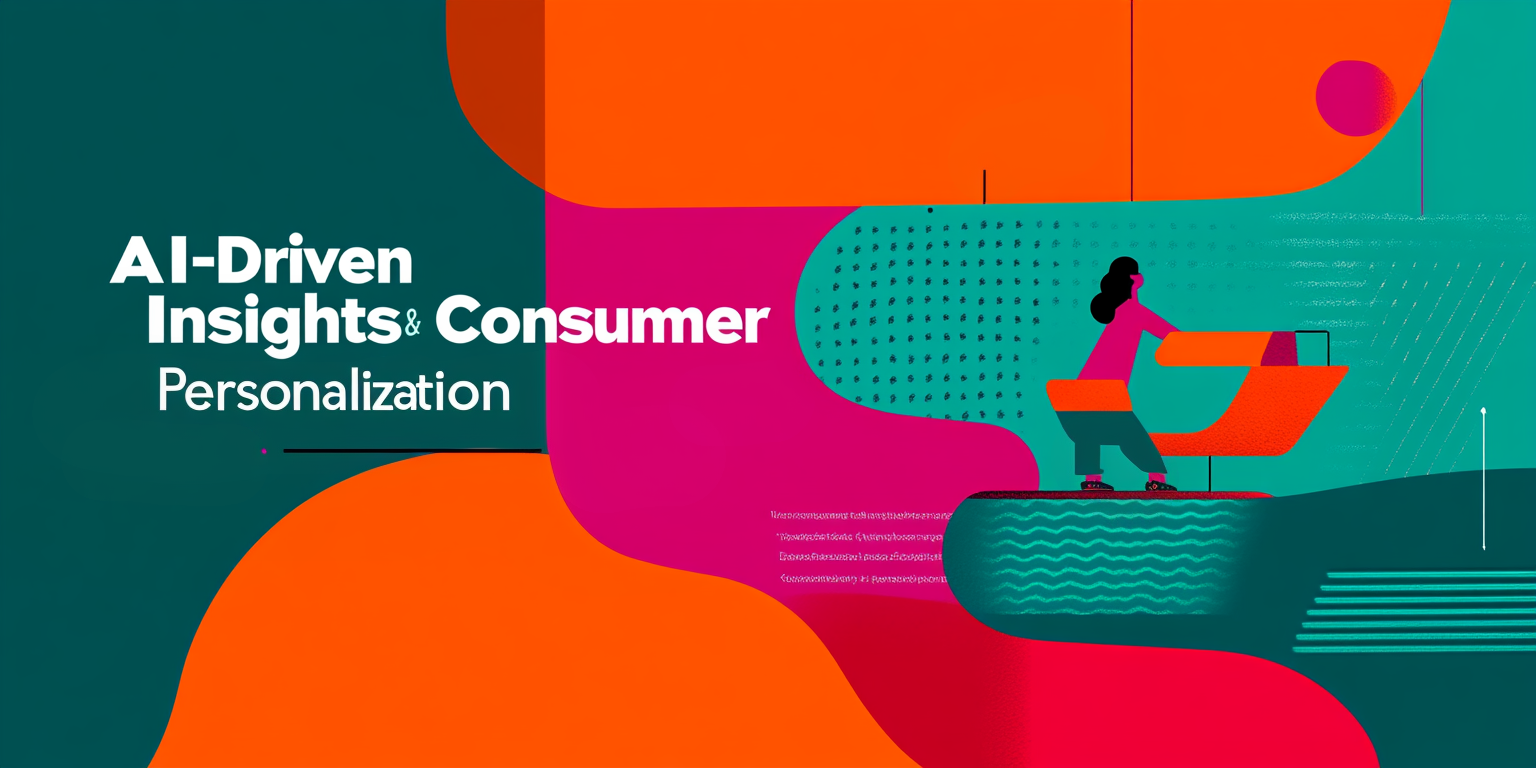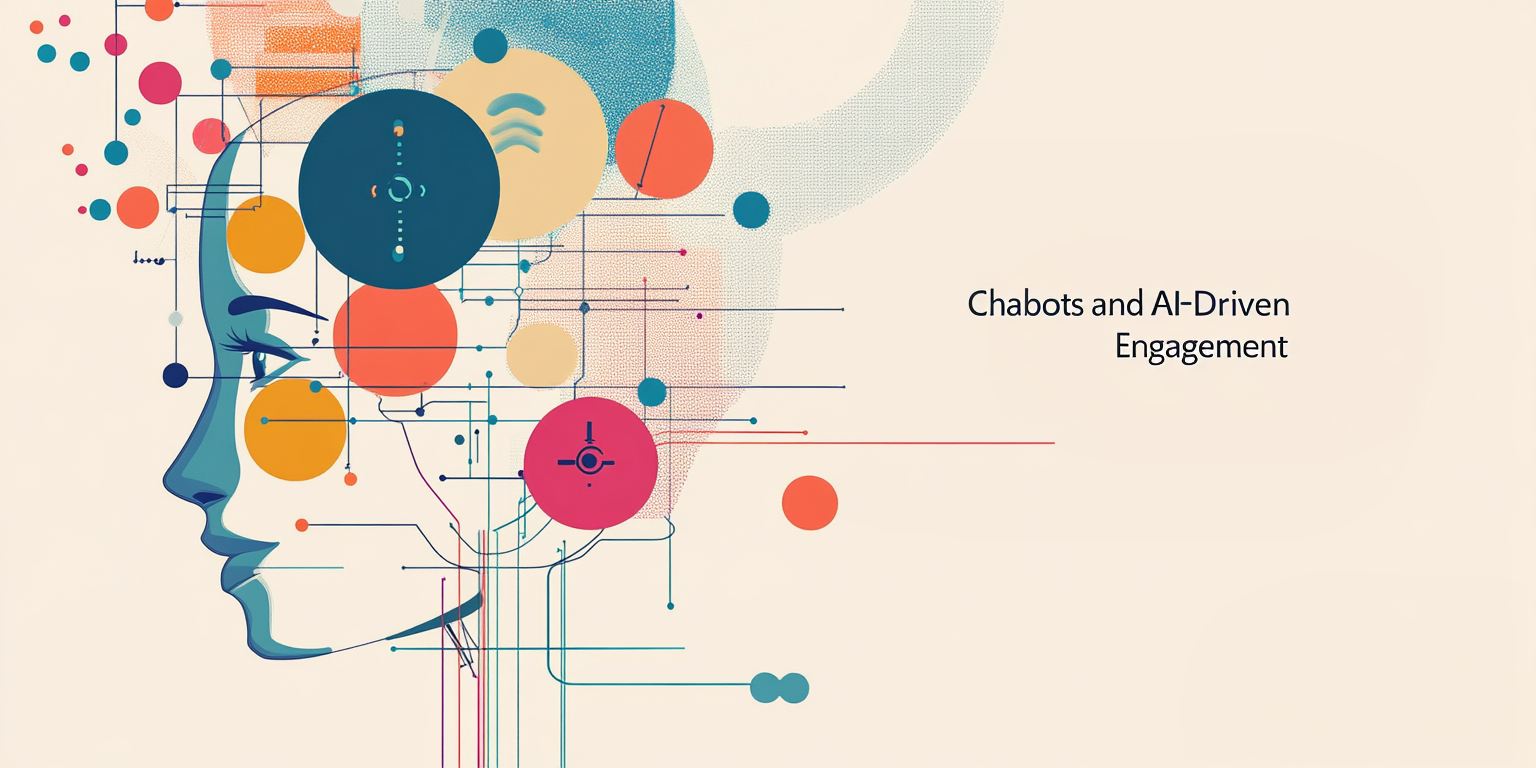How Artificial Intelligence Is Transforming the Art and Science of Branding
“AI won’t replace marketers. But marketers who use AI will replace those who don’t.””
In this Guide:
What Branding Means in the AI Era
Applications of AI in Brand Development
AI-Driven Consumer Insights and Personalization
Chatbots and AI-Driven Customer Engagement
Risks, Ethical Concerns, and Human-AI Collaboration
How Businesses Can Begin Incorporating AI into Their Brand Strategy
What Branding Means in the AI Era
I remember the first time I saw an AI-generated logo. It was 2018, and a client had proudly shown me their new brand mark—a sleek, modern design with an interesting color gradient. When I complimented them on working with a talented designer, they smiled and said, "Actually, we used an AI tool. It cost us $50 and took 15 minutes."
My first reaction was disbelief, followed quickly by concern for my designer friends. But as I've watched artificial intelligence evolve over the past few years, I've come to understand that AI isn't replacing creativity—it's redefining it.
Branding has always been about creating meaningful connections between companies and their audiences. It's the art and science of crafting a unique identity that resonates with consumers and differentiates a business from its competitors. In many ways, the fundamental principles of brand equity remain unchanged—consistency, authenticity, and emotional resonance still matter. What's changing dramatically is how we achieve these goals.
In the AI era, branding has become:
More Data-Driven: Decisions that were once based primarily on intuition and experience are now informed by vast amounts of consumer data and predictive analytics.
More Personalized: Rather than one-size-fits-all messaging, brands can now deliver customized experiences at scale.
More Responsive: Brand management has evolved from periodic campaigns to real-time engagement.
More Experimental: AI tools allow for rapid testing and iteration of brand elements.
More Accessible: Sophisticated branding capabilities that were once available only to large corporations are now within reach of smaller businesses.
The democratization of branding through AI tools has fundamentally altered the landscape. A small startup can now access branding capabilities that would have required a Madison Avenue agency just a decade ago. This shift doesn't diminish the importance of branding—if anything, it elevates it by making strategic brand management a necessity for businesses of all sizes.
Applications of AI in Brand Development
The integration of artificial intelligence into brand development has transformed every stage of the process, from initial concept to ongoing management. Let's explore the key areas where AI is making the most significant impact:
Logo and Visual Identity Generation
AI-powered design tools have revolutionized the creation of visual brand elements. Platforms like Looka, Brandmark, and Tailor Brands use machine learning algorithms to generate logos based on user preferences, industry standards, and design principles. These tools analyze thousands of successful logos to understand what works visually and can produce dozens of options in minutes.
But the most sophisticated applications go beyond simple logo generation. They create comprehensive visual identity systems, including color palettes, typography recommendations, and even application examples across different media. The AI doesn't just create a logo; it develops a cohesive visual language that can be applied consistently across all brand touchpoints.
What makes these tools particularly valuable is their ability to learn from user feedback. As you select and refine options, the AI adjusts its recommendations to better align with your preferences. This collaborative approach combines the efficiency of automation with the nuance of human judgment.
Brand Voice and Content Creation
Perhaps the most dramatic AI advancement in branding has been in natural language processing and generation. Tools powered by large language models can now create brand-aligned content at scale, from social media posts to product descriptions to entire blog articles.
These AI systems can be trained on a brand's existing content to capture its unique voice and tone. Once calibrated, they can generate new content that maintains consistent messaging while adapting to different contexts and audiences. This capability is transforming how brands maintain their verbal identity across an ever-expanding array of communication channels.
For example, a financial services company might use AI to ensure that its brand voice—professional but approachable, expert but not condescending—remains consistent whether communicating through a tweet, a newsletter, or a detailed white paper. The AI learns the patterns that define the brand's verbal identity and applies them to new content creation.
Brand Monitoring and Management
AI has also transformed how brands monitor their presence and perception in the market. Advanced sentiment analysis tools can track brand mentions across social media, news outlets, review sites, and other channels, providing real-time insights into how consumers feel about a brand.
These tools go beyond simple positive/negative classification to understand nuanced emotions and contextual factors. They can identify emerging issues before they become crises, spot opportunities for engagement, and track the effectiveness of brand initiatives over time.
For global brands, AI-powered monitoring is particularly valuable because it can analyze content in multiple languages and cultural contexts. This capability helps ensure that brand perception is managed consistently across different markets while respecting local nuances.
Competitive Analysis
Understanding your position in the competitive landscape is essential for effective brand management. AI tools can continuously analyze competitor brands, tracking everything from visual elements to messaging strategies to customer engagement patterns.
These analyses provide actionable insights that help brands identify gaps in the market, anticipate competitive moves, and refine their own positioning. By processing vast amounts of data from across the digital ecosystem, AI can reveal patterns and opportunities that might be invisible to human analysts.
For instance, an AI system might notice that a competitor's social media engagement spikes when they use certain types of imagery or messaging themes. This insight could inform your own content strategy or help you identify underserved segments of the market.
AI-Driven Consumer Insights and Personalization
The relationship between brands and consumers has been fundamentally altered by AI's ability to gather, analyze, and act upon unprecedented amounts of customer data. This capability has transformed how brands understand and respond to consumer needs and preferences.
From Demographics to Psychographics
Traditional market segmentation relied heavily on demographic factors like age, gender, income, and location. While these remain important, AI has enabled a shift toward psychographic segmentation—understanding consumers based on their attitudes, values, interests, and lifestyles.
By analyzing behavioral data from multiple sources, AI can identify patterns that reveal deeper insights about consumer motivations and preferences. These insights allow brands to create more resonant messaging and experiences that connect with consumers on a psychological level.
For example, rather than simply targeting "women aged 25-34," a brand might use AI to identify and reach "environmentally conscious urban professionals who prioritize experiences over possessions." This more nuanced understanding leads to stronger brand-consumer connections.
Predictive Personalization
Perhaps the most powerful application of AI in branding is predictive personalization—using data and machine learning to anticipate consumer needs and preferences before they're explicitly expressed.
Netflix's recommendation engine is a classic example of this approach. By analyzing viewing patterns, the platform doesn't just suggest content based on what you've already watched; it predicts what you might enjoy next. This same principle is being applied across industries, from retail to financial services to healthcare.
For brands, predictive personalization enables the creation of customer experiences that feel remarkably intuitive and responsive. When a brand seems to understand what you want before you've fully articulated it yourself, it creates a powerful impression of alignment and empathy.
Dynamic Brand Experiences
The combination of real-time data analysis and automated content generation allows brands to create dynamic experiences that adapt to individual consumers. Rather than presenting a static brand identity, companies can now offer personalized versions of their brand that maintain core elements while adjusting to individual preferences.
This approach is particularly evident in digital advertising, where AI enables the creation of thousands of variations of a single ad, each optimized for specific audience segments. The core brand message remains consistent, but the presentation—imagery, language, offers—shifts based on what will resonate most with each viewer.
Similarly, AI-powered website personalization can adjust content, imagery, and even navigation based on a visitor's behavior and preferences. A returning customer might see different aspects of the brand highlighted than a first-time visitor, creating a more relevant experience for each.
Chatbots and AI-Driven Customer Engagement
The front line of brand interaction has increasingly become automated through AI-powered conversational interfaces. These systems, ranging from simple rule-based chatbots to sophisticated virtual assistants, are reshaping how brands engage with customers at scale.
The Evolution of Conversational AI
Early chatbots were little more than automated FAQ systems, capable of responding to a limited set of predefined queries with scripted answers. Today's conversational AI systems are dramatically more sophisticated, capable of understanding natural language, maintaining context across complex interactions, and even detecting emotional cues in text.
This evolution has transformed chatbots from clunky utilities to genuine brand ambassadors. A well-designed conversational AI doesn't just provide information; it embodies the brand's personality and values in every interaction. The tone, language, and conversational style of these systems are carefully crafted to align with the broader brand identity.
For example, a luxury fashion brand might develop a conversational AI that's sophisticated, knowledgeable about fashion history, and slightly exclusive in its tone. In contrast, a youth-oriented snack brand might create a chatbot that's playful, uses contemporary slang, and incorporates pop culture references.
Personalized Service at Scale
One of the most significant advantages of AI-driven customer engagement is the ability to provide personalized service to millions of customers simultaneously. By integrating with customer data platforms, conversational AI can tailor responses based on a customer's history, preferences, and behavior.
This capability allows brands to maintain a consistent level of service across all customer interactions, regardless of volume. Whether a brand is handling ten customer inquiries or ten thousand, each customer receives a response that feels personalized and attentive.
The impact on brand perception can be profound. When customers consistently receive prompt, helpful, and personalized responses, it strengthens their connection to the brand and increases loyalty. Conversely, poor implementation of conversational AI can damage brand perception if customers feel they're being fobbed off with automated responses that don't address their needs.
Proactive Engagement
The most advanced applications of AI in customer engagement move beyond reactive responses to proactive outreach. By analyzing patterns in customer behavior, AI systems can identify opportunities for meaningful engagement before a customer has explicitly requested assistance.
For instance, an e-commerce platform might notice that a customer has viewed the same product category multiple times without making a purchase. An AI-powered system could initiate a conversation offering assistance, perhaps suggesting alternative products or addressing common concerns about the items being considered.
This proactive approach, when implemented thoughtfully, can create moments of delight that strengthen brand affinity. The key is ensuring that such outreach feels helpful rather than intrusive—a balance that requires careful calibration of the AI system and clear alignment with the brand's overall relationship with its customers.
Ready to Develop Your Brand's Personality?
Understanding your brand's unique personality is essential before implementing AI tools in your branding strategy. Our Brand Personality Worksheet helps you define the core traits that make your brand distinctive and memorable
Risks, Ethical Concerns, and Human-AI Collaboration
As with any transformative technology, the integration of AI into brand management brings significant challenges alongside its benefits. Understanding and addressing these concerns is essential for brands seeking to leverage AI responsibly and effectively.
The Authenticity Paradox
Perhaps the most fundamental tension in AI-driven branding is what we might call the authenticity paradox. Consumers increasingly value authentic brands that stand for something real and meaningful. Yet AI tools, by their nature, can create content and experiences that feel manufactured or synthetic if not implemented thoughtfully.
This tension is particularly evident in AI-generated content. When consumers discover that the heartfelt blog post they connected with was written by an algorithm rather than a human, it can create a sense of deception that undermines trust in the brand.
The solution isn't avoiding AI altogether but rather being transparent about its use and ensuring that AI-generated elements align with genuine brand values and human oversight. The most successful brands view AI as an amplifier of human creativity and strategy, not a replacement for it.
Privacy and Data Ethics
The personalization capabilities that make AI so powerful for branding rely on vast amounts of consumer data. As brands collect and leverage this data, they must navigate increasingly complex ethical and regulatory landscapes around privacy and consent.
Consumers are becoming more aware of and concerned about how their data is used. Brands that are perceived as invasive or manipulative in their data practices risk significant damage to their reputation and customer relationships.
Responsible AI-driven branding requires a clear ethical framework for data collection and use. This includes obtaining meaningful consent, being transparent about how data informs personalization, and giving consumers control over their information. Brands that get this right can build deeper trust, while those that misstep face growing backlash.
Bias and Representation
AI systems learn from existing data, which means they can perpetuate and amplify biases present in that data. For brands, this creates risks around representation and inclusion in everything from the images an AI generates to the language it uses to the audience segments it identifies.
For example, an AI trained on historical marketing materials might learn to associate certain products primarily with specific genders or ethnicities, potentially leading to narrow or stereotypical representations in new content. Similarly, predictive algorithms might underserve certain customer segments if those groups are underrepresented in training data.
Addressing these issues requires intentional effort: diverse training data, regular auditing of AI outputs for bias, and human oversight of automated systems. Brands that proactively manage these risks not only avoid potential reputation damage but also create more inclusive and resonant brand experiences.
The Human-AI Partnership
The most effective approach to AI in branding isn't full automation but rather a thoughtful collaboration between human brand stewards and AI tools. This partnership leverages the complementary strengths of each: AI's ability to process vast amounts of data and generate options at scale, combined with human judgment, creativity, and ethical reasoning.
In practice, this means using AI to handle repetitive tasks, generate initial options, and provide data-driven insights, while relying on human expertise for strategic decisions, creative direction, and quality control. The brands that excel in this new landscape will be those that find the right balance—using AI to enhance human capabilities rather than replace them.
For example, a content team might use AI to generate draft social media posts based on brand guidelines, but have human editors review and refine them before publication. Or a design team might use AI to generate dozens of logo concepts, then apply their expertise to select and modify the most promising options.
How Businesses Can Begin Incorporating AI into Their Brand Strategy
The integration of AI into brand management isn't an all-or-nothing proposition. Organizations can adopt a phased approach, starting with targeted applications that address specific needs and gradually expanding as they build expertise and confidence.
Assessing Your Brand's AI Readiness
Before implementing AI tools, it's important to evaluate your organization's readiness across several dimensions:
Data Infrastructure: Do you have the necessary data to train and feed AI systems? Is this data organized, accessible, and of sufficient quality?
Brand Clarity: Have you clearly defined your brand identity, voice, and values? AI tools need these parameters to generate on-brand content and experiences.
Technical Capabilities: Does your team have the skills to implement and manage AI systems, or will you need external partners?
Organizational Culture: Is there openness to new technologies and ways of working? Are there concerns about AI that need to be addressed?
This assessment helps identify the most promising entry points for AI and potential barriers that need to be addressed. It also establishes a baseline against which you can measure the impact of AI initiatives.
Starting Small: Low-Risk AI Applications
For many organizations, the best way to begin is with contained, low-risk applications that deliver clear value without requiring massive changes to existing processes. Some potential starting points include:
Social Media Monitoring: Use AI-powered tools to track brand mentions and sentiment across platforms, providing real-time insights without replacing human community managers.
Content Optimization: Implement AI tools that analyze existing content performance and suggest improvements to headlines, structure, or keywords.
Customer Service Augmentation: Deploy simple chatbots to handle routine inquiries, freeing human agents to focus on more complex interactions.
A/B Testing Enhancement: Use AI to generate and test multiple variations of marketing materials, identifying the most effective options more efficiently.
These applications can deliver tangible benefits while allowing your team to gain familiarity with AI capabilities and limitations. They also tend to augment rather than replace existing roles, reducing potential resistance.
Building an AI-Ready Brand Architecture
As you expand your use of AI in brand management, it becomes increasingly important to have a clear and flexible brand architecture framework . This framework defines how different brands, sub-brands, and product lines within your organization relate to each other and to the parent brand.
A well-designed brand architecture provides the structure and guidelines that AI systems need to generate consistent, on-brand content across your portfolio. It helps ensure that automation doesn't lead to brand fragmentation or confusion.
For organizations with complex brand portfolios, this may mean simplifying or clarifying relationships between brands before implementing AI at scale. The investment in this foundational work pays dividends in more effective AI implementation and stronger overall brand coherence.
Developing AI Governance for Brand Management
As AI becomes more integral to your brand strategy, establishing clear governance becomes essential. This includes:
Roles and Responsibilities: Defining who owns AI-driven brand initiatives, who provides oversight, and who has authority to approve AI-generated content.
Quality Control Processes: Establishing procedures for reviewing and refining AI outputs before they reach customers.
Performance Metrics: Determining how you'll measure the impact of AI on brand perception, engagement, and business outcomes.
Ethical Guidelines: Creating clear principles for responsible AI use, particularly around data privacy, transparency, and bias prevention.
Contingency Plans: Preparing for potential issues, from technical failures to public concerns about AI use.
Effective governance ensures that AI enhances rather than undermines your brand, providing the structure needed for responsible innovation.
Cultivating AI Literacy Across Your Organization
The successful integration of AI into brand management isn't just a technical challenge—it's also a human one. Building AI literacy throughout your organization helps ensure that these powerful tools are used effectively and responsibly.
This doesn't mean everyone needs to become a data scientist or machine learning expert. Rather, it's about developing a basic understanding of AI capabilities, limitations, and implications among all those involved in brand management. This includes:
Marketing Teams: Understanding how AI can enhance their work without replacing core creative and strategic functions.
Customer-Facing Staff: Knowing how to work alongside AI systems in customer interactions.
Leadership: Grasping the strategic implications of AI for brand positioning and competitive advantage.
Legal and Compliance: Recognizing the evolving regulatory landscape around AI and data use.
Investing in this knowledge building helps prevent both unrealistic expectations and unfounded fears about AI, creating a foundation for thoughtful adoption.
The Future of AI in Brand Management
As we look ahead, it's clear that AI will continue to transform how brands are built, managed, and experienced. The pace of innovation in this field is remarkable, with new capabilities emerging regularly that expand what's possible in brand management.
Yet the fundamental principles of effective branding remain constant. Successful brands will still need to be authentic, consistent, and emotionally resonant. They'll still need to deliver on their promises and create meaningful connections with their audiences. AI doesn't change these fundamentals—it provides new and powerful ways to achieve them.
The brands that thrive in this new landscape will be those that find the right balance between technological capability and human judgment. They'll use AI to handle routine tasks, generate options, and process data at scale, while relying on human creativity, empathy, and strategic thinking to make the decisions that truly define a brand.
They'll also recognize that AI is transforming digital marketing more broadly, creating new channels, formats, and expectations that brands must navigate. The integration of AI into brand management doesn't happen in isolation—it's part of a larger digital transformation that's reshaping the entire marketing landscape.
For brand managers and marketers, this is a time of unprecedented opportunity and challenge. The tools at our disposal are more powerful than ever, but using them effectively requires new skills, new processes, and new ways of thinking. Those who embrace this evolution, approaching AI as a collaborator rather than a threat, will be positioned to build stronger, more resilient brands in the years ahead.
The future of branding isn't purely human or purely artificial—it's a thoughtful collaboration between the two, combining the best of both to create brand experiences that are more personalized, more responsive, and more meaningful than ever before.
Schedule a free consultation with our branding experts to discover how AI can enhance your brand strategy while maintaining your authentic voice.






